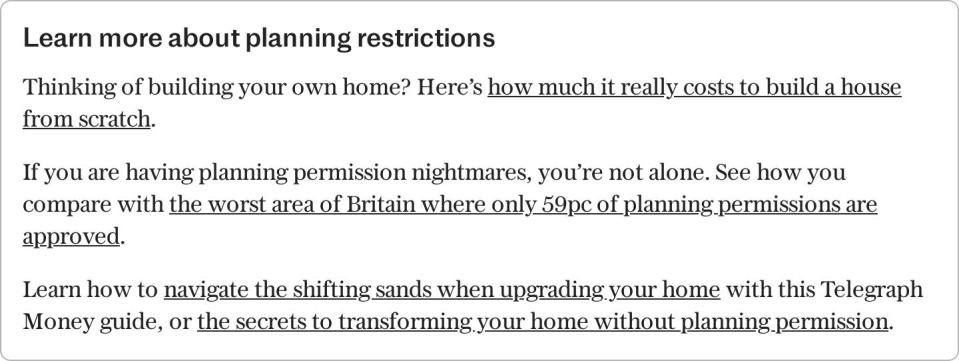Anyone planning to do a major renovation on their home will need to think about where they will live if their home is demolished.
Hardy souls can save money by staying on site, living with the dust, noise and mess of the builders. Others will stay with friends or bite the bullet and find a rental somewhere.
Marty Orton, 51, took a more unusual route.
Before he and his wife Jayne Sibley, 49, renovated their four-bedroom 1970s home in St Cross, Winchester, he spent the best part of a year building a spectacular waterside wooden cabin for the family – including two children, now aged 13 and 15 – to live in while the work was completed.
The 24m2 wooden cabin cantilevers over part of the River Itchen, which flows through the family’s quarter-acre garden.
It features built-in bunk beds, a mezzanine sleeping area, a living space, a terrace and an outdoor kitchen (the family had use of a bathroom in the house during construction).
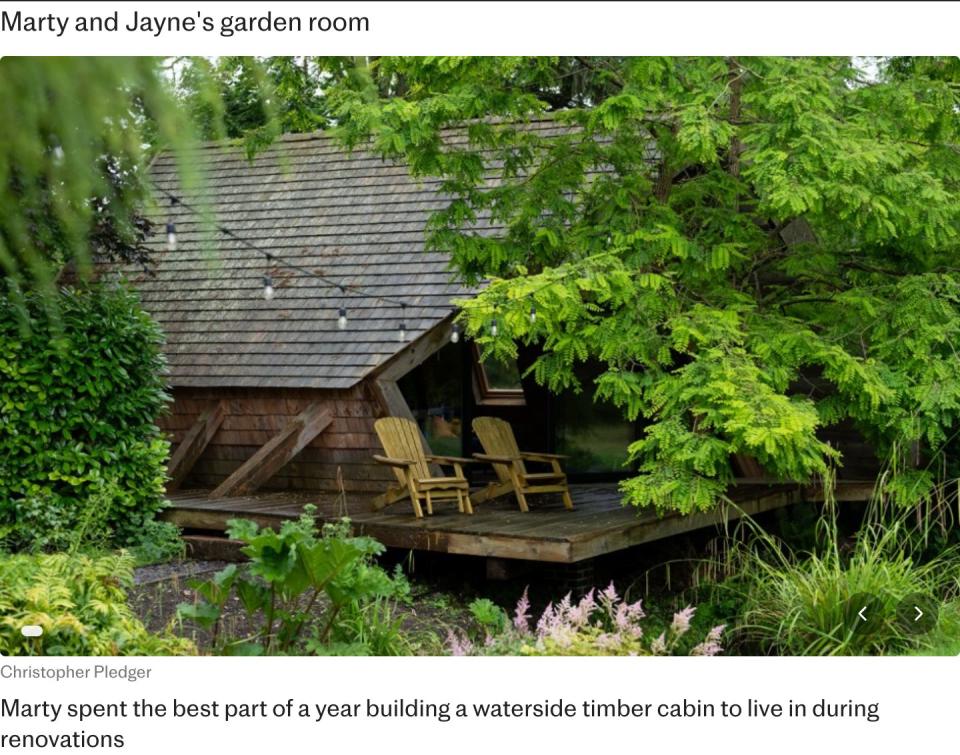

Building in the garden has become an increasingly common alternative to moving, especially after the pandemic when families needed extra space – and one that can make financial sense too.
Construction costs vary widely and you’ll have to navigate some pretty complicated bureaucracy. But whether you want a home office, a new revenue stream, a teen hangout or a place for hobbies, garden rooms can be as flexible as you want them to be.
Marty and Jayne live in the South Downs National Park, meaning it was mandatory for them to go through the planning process.
They hired AR Design Studio to design a cabin with the brief to create a space for the whole family that was simple enough to build themselves, using sustainable and local materials.
“I looked at renting and it would cost £25,000,” Marty said. “I decided to build somewhere the whole family could live for six months, although it ended up being almost a year.”
In 2021, construction of the house began and the family moved into the cabin, taking minimal belongings with them.
“It was wonderful,” Marty said. “I can’t remember anything negative. In fact, when the house was finished and the family came back, I stayed for another month.”
After Marty left the building, he and Jayne used it as an office for their fintech startup Sibstar, a debit card and app specifically for people with dementia.
After adding a bathroom, they started renting it out on Airbnb for between £150 and £250 a night, which helped offset the original £70,000 build cost. “It’s been a really good investment,” Marty said.
‘We built a garden hangout for our teenagers’
For Katherine and Chris Reid, building in their garden was more about improving family life than making money.
The couple had long known that life in a rural village eight miles south-west of Cambridge, with no amenities and little public transport, might be wonderful for them but would be a challenge for their children, now aged 17 and 15.
When the couple extended their monumental thatched cottage, they decided to add a separate garden, so the children had somewhere to hang out and entertain their friends.
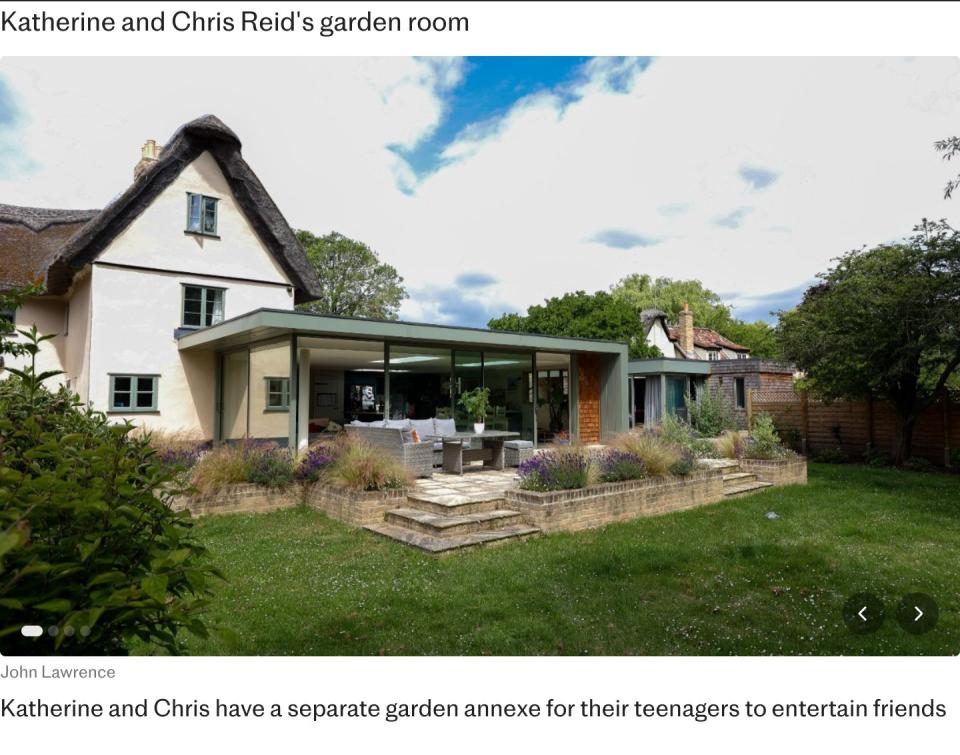

“We were thinking mainly about teenagers stuck in a rural village,” said Katherine.
Katherine and Chris, both 51, have owned their home for around 12 years and just before the pandemic they decided to update the five-bedroom house by adding a large extension, designed by Snell David Architects, plus a loft extension.
Next to the house was a “really unattractive” garage; the original idea was to rebuild this with a glass walkway connecting the new building to the main house. The idea was rejected by planners, so it evolved into a separate garden room designed to mirror the extension with cedar shingles, powder-coated aluminium panels and sliding glass doors. The build cost around £110,000.
“It’s a really multi-functional space,” said Katherine, a speech therapist. “It’s somewhere I could use as a clinic space if I stopped working for the NHS, or Chris, a financial analyst, could use it as an office. It’s got its own bathroom, so we can use it as a spare bedroom for guests.”
Katherine and Chris let their architects take the lead on the modern design. “But we all agreed that something completely different would be exciting and complement the very chocolate box country cottage look of the house.”
‘Spending £300,000 was ridiculous – but it was worth it’
When designing his garden house, Ariel Klein decided to ignore the old adage that work and pleasure should never mix.
The cedar-clad space houses an office he uses for his real estate development and renovation businesses, and a climbing wall where he can indulge his love of bouldering.
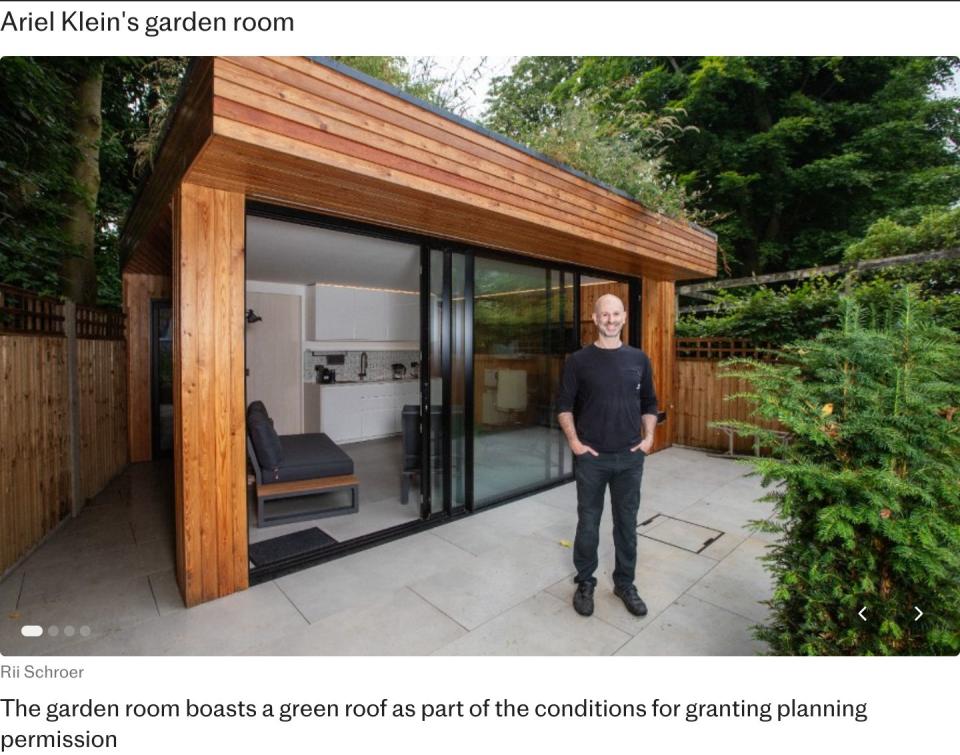

Ariel’s family home is in Hampstead, North London, and his company owns a converted house that is rented out as flats around the corner. At the end of the garden was a dilapidated, unattractive and little-used barn that Ariel thought he could replace with an office for his business. But during the pandemic, with climbing gyms closed, he decided to add a climbing wall to the space.
A combination of the tapered shape of the garden and the need to dig deep to give the climbing wall sufficient height meant he couldn’t buy a ready-made garden pod. Instead, he hired William Tozer Associates to design a bespoke space for him.
The 4,000-square-foot space cost him just over £300,000 (plus VAT), but Ariel, 52, has rationalised the outlay in two ways. Firstly, the space is being put to good use and his children enjoy it. Secondly, it could be a solid investment in time.
“It would certainly have been cheaper to have something prefabricated, but the irregular shape of the garden required a bit more creative thinking,” says Ariel.
The project required a building permit, not because of its size, but because permission is automatically required if the main building is split into apartments.
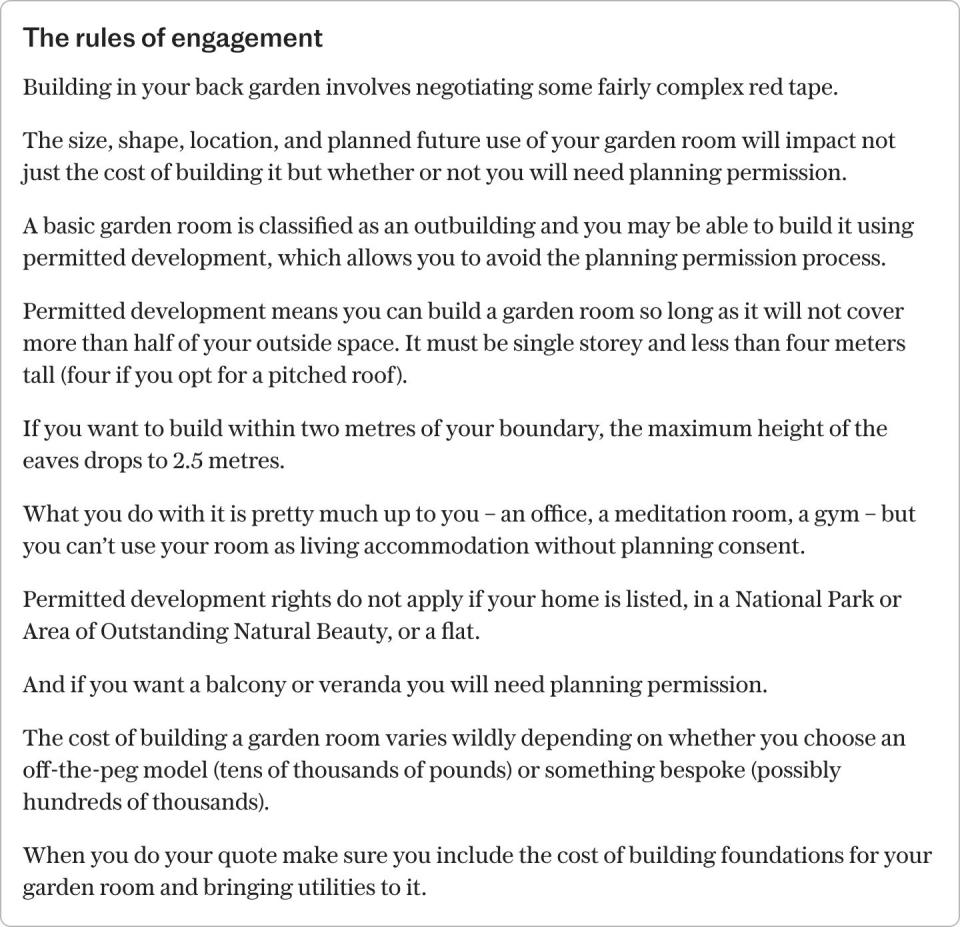

Construction of the room took six months and took place in 2022. As a condition of obtaining building permits for the cedar-clad building, Ariel had to agree to the installation of a green roof.
To justify the expense, Ariel points out that having a new office has freed up the apartment in the building he previously used as office space, which can now be rented out. And, if he decides to do so, he could rent the space to another company, which would provide an additional revenue stream.
It is currently not permitted to be used as a residential property, but if building regulations change it could be converted into a charming, albeit small, cottage.
“From a certain perspective, it’s a bit of a crazy expense,” Ariel admitted. “But there’s a reasoning behind it.”
